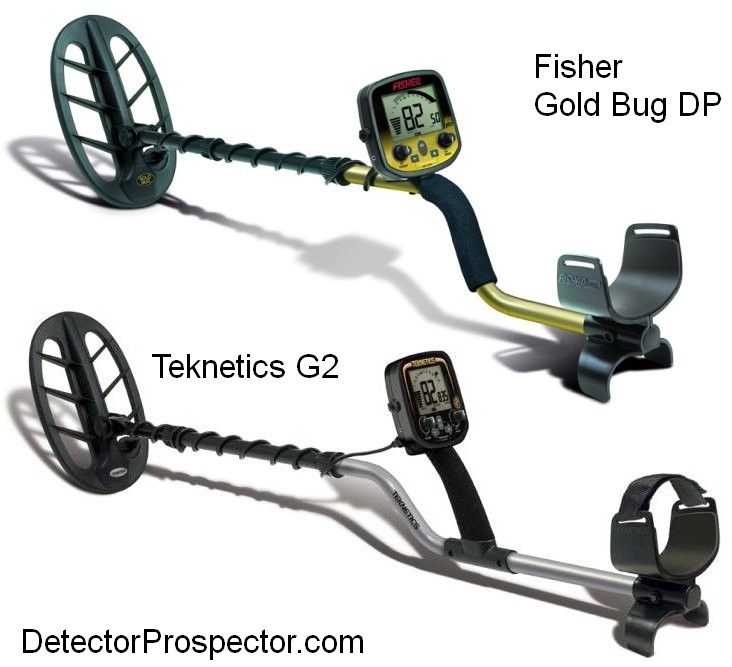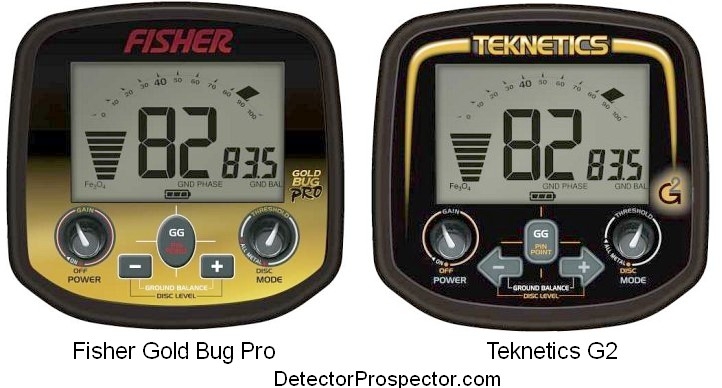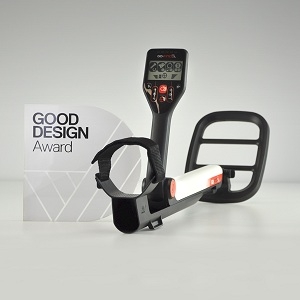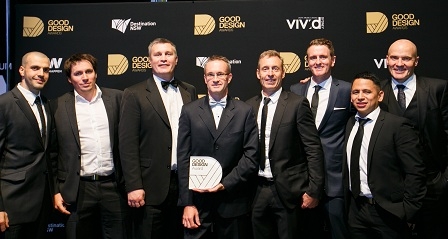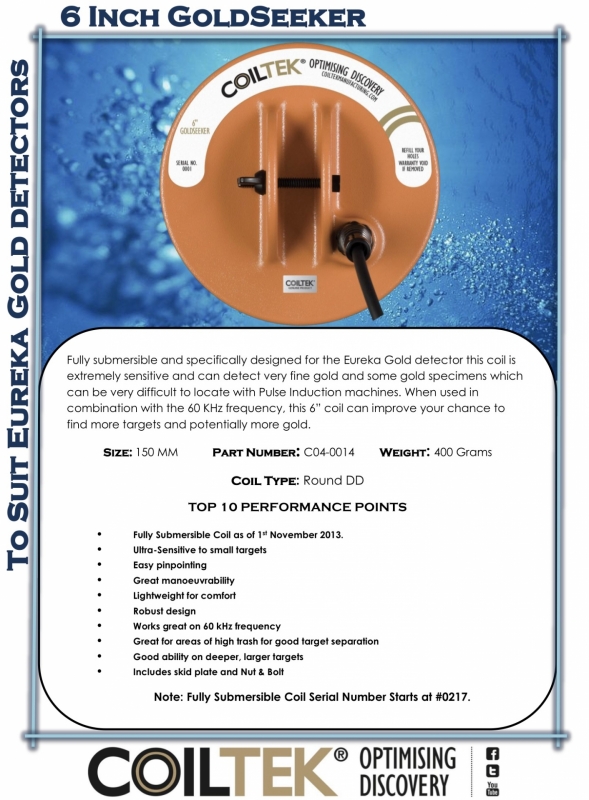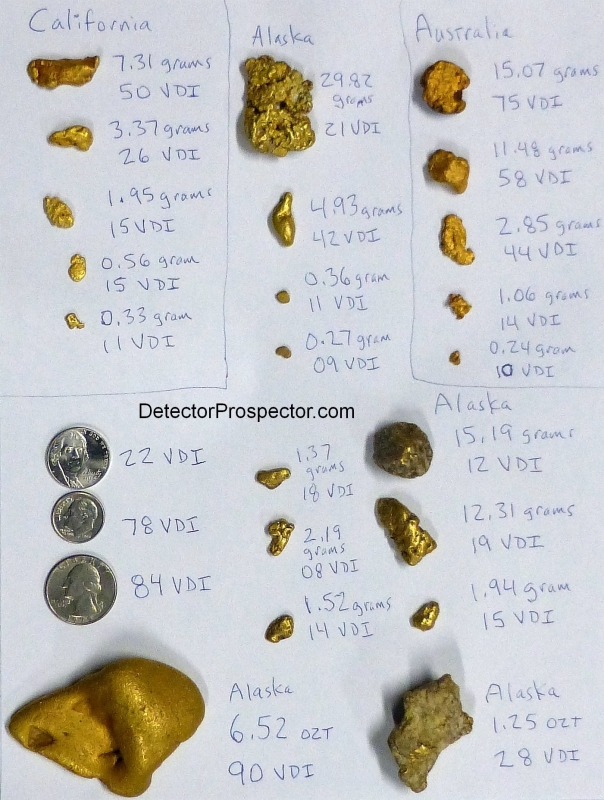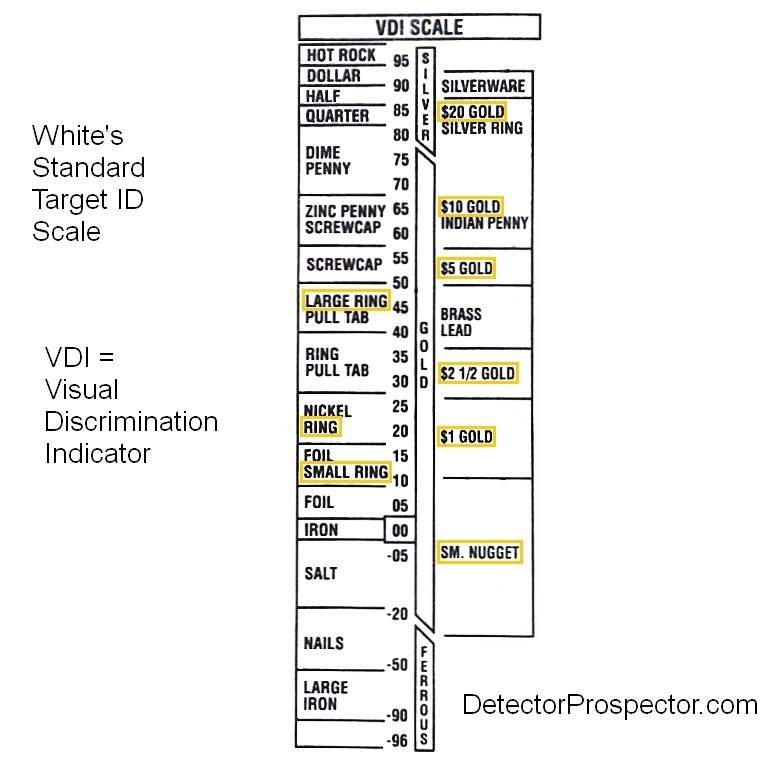-
Posts
19,734 -
Joined
-
Days Won
1,565
Content Type
Forums
Detector Prospector Home
Detector Database
Downloads
Everything posted by Steve Herschbach
-

Detector Prospector Hats
Steve Herschbach replied to roustabout's topic in Detector Prospector Forum
I will look into it but I have sold custom hats in the past. There is a logo setup cost and volume discounts. Normally you have to order hundreds of hats to be cost effective. I don't see me investing in several hundred hats. However, times have changed and lower cost options are more common. With me being very busy right now and July around the corner I can't offer much hope. -
My reply on the MD Hunter blog stated that their photo of a purported GPX 19 coil at the Vegas Show was actually of a GPX 18" coil. I was at the show and I was with the Minelab rep who announced news of the new coil. There was no GPZ19 coil at the show and that's a fact. The photos you posted are newer and indeed of the GPZ19 coil. And by the way, the GPX uses mono and DD coils. This new 19" coil is now old news and no mystery as to its construction - it is simply a larger version of the coil that comes on the GPZ, a Super D or "DOD" coil. The photo at the start of this thread is of housing parts. The coil is a cut out design to save weight. The coil was first announced on this forum February 27 at http://www.detectorprospector.com/forum/topic/1712-19-20-coil-for-gpz-7000/ The official announcement was April 10 http://www.detectorprospector.com/forum/topic/1922-gpz-19-accessory-coil-coming-soon/ And yet another thread May 20 http://www.detectorprospector.com/forum/topic/2076-minelab-gpz-19-coil/#comment-24952
-

Small Discriminating Pinpointer...
Steve Herschbach replied to Au4Gold2's topic in Metal Detector Advice & Comparisons
That is a great idea I never considered Mike - thanks! -

Treasure Hunting On The Beach With GPZ 7000
Steve Herschbach replied to ozgold's topic in Metal Detecting For Jewelry
Funny you mention it since I plan on doing some fresh water beach detecting with the GPZ very soon. No issues around fresh water but you are very likely going to have problems with wet salt sand, and due to the power of the GPZ no telling how far up the beach you may need to be from water before that wold not be a problem. The answer for me in the salt and the moans and groans the detector makes is to slow way, way down. You will probably find that hunting straight towards water and straight away from it will minimize the problem. If you are after rings do not be afraid to try the Severe ground mode to try and alleviate the salt effect, but it has not proven to be a magic bullet for salt effects unfortunately. Almost all jewelry and small trash with give a hi-lo tone. Coins except for nickels and possibly zinc pennies will give a lo-hi tone. It would be easy to cherry pick coins but no easy answer on jewelry and small aluminum or small ferrous. The GPZ should really love bobby pins! I would be very interested in a report back from you if you give it a go. If you do get into beach detecting you will probably want another machine but since you have the Zed it is worth a try. Do fill in the big pits you will have to dig. -
I should point out that both these detectors have newer versions out, the Teknetics Omega 8500 and Teknetics G2+ That being the case this is clearing out of older stock? Great prices. If I was a dealer I would be screaming bloody murder! For any who do not know the Teknetics G2 is the exact same detector as the Fisher Gold Bug DP, just with a gray pistol grip rod assembly. First Texas the parent company owns both Fisher and Teknetics, so it is a Chevy/GM thing. The Gold Bug Pro normally comes with a 5" round DD and sells for $649. The Gold Bug DP is the same detector with 7" X 11" DD instead and sells for $699. Fisher Gold Bug Model Comparison So to repeat the G2 is the same detector as the $699 Gold Bug DP but with a different rod assembly, and right now you can get the G2 for $460. Frankly, I am very tempted to get one for that price. Here are the two detectors side by side:
-

Garrett AT Concept - New For 2016 Or Fake?
Steve Herschbach replied to MikePfeiffer's topic in Garrett Metal Detectors
I will place my bet on fake. -
Minelab is pleased to announce that our GO-FIND Series of treasure detectors has won a Good Design Award® for 2016. There were 34 entrants in the “Sport and Lifestyle” category and GO-FIND impressed the judges with its innovation and aesthetics. The winner was announced on Friday 27th May at the Good Design Awards ceremony in Sydney. Minelab Project Manager, Simon Mazurek, accepted the award on behalf of Minelab, stating “it was a great collaborative team effort between Minelab, Katapult Design and Planet Innovation, resulting in an exciting new product range for beginner detectorists and outdoor enthusiasts”. The GO-FIND Series is the latest addition to Minelab’s extensive range of metal detectors designed for the consumer market, featuring a lightweight collapsible design, easy-to-use controls and a smartphone app. For more information about our entry, visit: https://www.good-design.com/entry/go-find/ For more information about GO-FIND detectors, visit our product page: http://www.minelab.com/go-find-40 About Good Design Australia The Good Design Awards is Australia’s longest standing national design award and promotion program, and one of the few forums for professional Industrial Designers and manufacturers to showcase their design expertise to national and international audiences. As a result of more than 50 years of design benchmarking, the program has focused on progressively raising the standard of design and innovation in Australia. For more information about Good Design Australia, please go to: http://www.gooddesignaustralia.com/about/
-
I was cleaning up stuff and frankly did not think this thread got enough airtime given how much information is packed in argyle's post. My understanding is the 6" coil was tuned more specifically for the 60 kHz frequency on the Eureka Gold and runs exceptionally well at that frequency. That coil really made me want to get another Eureka just to give it a go because I always thought the 60 kHz frequency was not really as hot as it should be on the Eureka with the existing coils. A Eureka was recently advertised in the Classifieds at such a killer price that I was sorely tempted to get it, again, just to try out the 6" coil. It would be fun to see how it fares against the GMT, Gold Bug 2, and Gold Racer as you never really see the Eureka at 60 kHz mentioned in the same breath with those other high frequency detectors. Sadly I could just not convince myself I needed one so others will have to weigh in on that subject.
-

Who Is Trash Talking Minelab? Why? Cause We Can!
Steve Herschbach replied to goldbrick's topic in Minelab Metal Detectors
For what it is worth I get a chance to rub elbows with Minelab folks now and then. I do of course use the opportunity to try and help Minelab see areas where people have concerns. I am happy to report they are always interested and in fact would like to do more. They unfortunately like all companies these days are not suffering for lack of things to do. Still, I think there is a desire to break down the walls that exist and for them (Minelab) to try and forge stronger bonds with their customers going forward. -

Missing Gold In " Difficult Ground Type" GPZ
Steve Herschbach replied to hawkeye's topic in Minelab Metal Detectors
Probably the best thing going about the SDC 2300 outside its gold getting ability is the lack of options as far as coils and settings. No decisions to make, almost impossible to set wrong. No ground and hot rock noise to interpret. I think it is the best beginners machine going were it not for that high price tag. The SDC 2300 does use a version of the GPX Fine Gold timings and it therefore is not immune to the above however. Certain nuggets will get missed. The fun thing about what we miss is that unless our buddy follows us and digs it up in front of us, we never know what we miss. I figure in over 40 years detecting I can now brag about missing more good targets than most people ever find! -

Missing Gold In " Difficult Ground Type" GPZ
Steve Herschbach replied to hawkeye's topic in Minelab Metal Detectors
More aggressive ground balancing shuts up ground noise and also shuts up gold nuggets that share the same target response as that ground. Running in Difficult will without a doubt miss gold that might be detected in Normal. Running a detector noisy while in Normal can also cause gold to be missed due to noise fatigue. The art of metal detecting comes into deciding which to use and when. There is no exact answer because it depends both on the ground and the operator. All I can say is that whenever you can run the least aggressive ground settings or timings that one can apply comfortably. If you can make the detector run quieter but not completely tune out the gold that is great. What is being pointed out here is a more aggressive ground setting will simply tune out some gold completely. My favorite example is the GPX 5000 Fine Gold setting. It does indeed shut up some of the very worst hot rocks, and this along with the Fine Gold name caused a lot of people to just leave their detectors in Fine Gold. The machine runs quiet, gold gets found, great! But Fine Gold is not a good name as the setting has nothing to do with Fine Gold. What it should be called is Highly Aggressive Ground Timing. Gold easily detected by the GPX Normal setting will fall into a hole created by the GPX Fine Gold timing and be missed entirely. Yet running Fine Gold in hot rock infested ground can deliver nuggets missed due to all the false signals from rocks. Like nearly all things metal detecting, a trade off. Salt settings are the same issue. Alkali ground and wet salt beach sand produce a conductive reading. This reading is exactly the same as the reading from very small or very deep gold. If the machine is constantly signaling from the salt, employing a salt mode will eliminate the salt signal, but also eliminate some gold signals. The ideal machine will allow just enough reduction in salt signal as is needed and still allow as many gold signals as possible, but there is an overlap where you have to choose one or the other. Preset timings are an all or nothing approach where in many cases some degree of finer adjustability would be desirable. A metal detector gets signals on conductive or magnetic targets, so we have ground minerals, salts, non-ferrous metals and ferrous metals plus electrical interference all wanting to make that machine go beep. The responses do not fall into neat categories but have huge ranges of overlap in the real world, far more so than air tests ever reveal due to the ground and adjacent items skewing results. A detector uses filters to deal with unwanted signals but every filter has a cost. Just eliminating electrical interference (EMI) can cause targets to be missed. Ground elimination of any sort eliminates certain signals. The more filters you apply and the more aggressive they are, the more good signals get tossed out also. The challenge for engineers always is finding a new filter or new way to get desirable targets to respond while somehow eliminating undesirable targets. It is a giant overlapping gray zone. So to repeat - whenever you can run the least aggressive ground settings or timings that one can apply comfortably. If you get right on a patch, going hot and noisy may turn up gold missed by well behaved quiet settings. -

Minelab CTX 3030 & XP Deus
Steve Herschbach replied to Don71's topic in Metal Detector Advice & Comparisons
I honestly do not have much time running the Deus. My take so far agrees with what I think most people would say, and that is that the Deus is best for somebody who wants to go after all non-ferrous targets. It can cherry pick to a certain degree but at the end of the day its target id accuracy is not up to what the CTX delivers. You can't beat a CTX for working groomed lawn areas where every hole must count. The CTX is no slouch in trash either, but the Deus by all accounts holds an edge there. The Deus also weighs less than half what a CTX weighs and there is little doubt that is a factor for many people. At the end of the day if I had to choose between the two it is an easy choice. CTX all the way for me for overall capability. Being waterproof and multi frequency give it a clear advantage around water, especially salt water. The Deus I honestly got mainly in anticipation of the upcoming V4 update and new 9" x 5" coil. That coil should make a machine that is already a winner in dense trash even better. The ability to run and up to 40 kHz may be enough to take the Deus from being just another run of the mill do it all machine when it comes to prospecting to maybe one of a very few in terms of small gold capability and ability to work trashy areas. Right now I would say the Deus make a nice but not needed complement for the CTX unless one is really focused on eking every last bit of non-ferrous from beds of nails. The V4 update may make the case even more compelling - at least that was my thinking. I will be using both the CTX and Deus a lot more in the coming months, often side by side on found targets in bad ground, and will offer more when I have a better informed opinion. If you Google around however you will see lots of people who think the CTX/Deus combo a good one for multiple reasons. I am sure other forum members have more they can add to the conversation. -
Ha, ha... well, the thing is I just posted an opinion from a particular perspective. Things can be looked at about any way a person chooses and we usually do! I can just flip it on its head and say that in order to be successful in metal metal detecting few people genuinely need anything more than a decent single frequency VLF.
-
This is purely my perception but when I look at the market as a whole today there are only two companies that seem to produce machines that innovate - Minelab and XP with the Deus. Everyone else just keeps rehashing the 1990s over and over again. Take away single frequency VLF detectors and non-ground balancing PI detectors from current lineups and look at what is left to get the real picture. First Texas - Fisher CZ3D and CZ21, multi-frequency 5 kHz and 15 kHz Garrett - ATX, multi-period ground balancing PI Tesoro - Nothing White's - V3i & VX3, multi or selectable frequency 2.5, 7.5, and 22.5 kHz; Beachhunter ID, multi frequency 3 kHz and 15 kHz; TDI, single channel ground balancing PI XP - Deus, selectable frequency 4, 8, 12, and 18 kHz Minelab - GPZ 7000, Zero Voltage Technology GPX 5000, multi-period ground balancing PI with dual voltage technology GPX 4500, multi-period ground balancing PI with dual voltage technology SDC 2300, multi-period fast ground balancing PI Eureka Gold, selectable frequency 6.4, 20, and 60 kHz X-Terra 705, 505, 305 - selectable frequency 3, 7.5, and 18.75 kHz CTX 3030, multi-frequency E-TRAC, multi-frequency Safari, multi-frequency Excalibur, multi-frequency It is even worse when you consider that the First Texas and White's offerings are all over ten years old. You can sum new tech up in the last decade as Minelab, Garrett with the ATX, and XP with the Deus.
-

Who Is Trash Talking Minelab? Why? Cause We Can!
Steve Herschbach replied to goldbrick's topic in Minelab Metal Detectors
Minelab is the company people love to hate. They truly are engineer driven, and the company as a whole seems to have that same disconnect with regular people that engineers are so famous for. Minelab the company is remarkably tone deaf to the little things that make customers feel like a company cares. -
Great video Tom, looks like you had a nice trip!
-
Here is a photo with some gold nuggets from Alaska, Australia, and California that I tested recently to show how VDI (visual display indicator) numbers vary dramatically with size, shape, and purity. Metal detectors do not know what metal is being detected. The target id number is based first on the conductivity of the item and also by the size of the item. Low conductive targets have low numbers, but the larger they are the higher the numbers go. Silver is the best conductor with gold being moderately conductive by comparison. Small gold items read very low, in the foil range, but the larger the nugget, the higher the numbers will go. Oddly enough adding silver to gold causes the conductivity to drop dramatically instead of adding to it. Pure metals are far better conductors than alloys. That being the case the Alaska gold has much lower conductivity than the Aussie or California gold. I have always used a U.S. nickel as a surrogate for about a 1/4 ounce gold nugget, a flattened nugget of that weight being close to a nickel in physical size. Part of this little study is to show how close to reality or not that may be, or any test items like lead or aluminum. I do not have much in the way of “normal” metal detectors these days. The closest I have right now is a White’s DFX which reads a nickel as 22 VDI, dime 78, and quarter 84. The White's VDI range is close to being a standard, with negative numbers relating to ground minerals and ferrous items, positive number non-ferrous. The range is from -95 to +95 with non-ferrous items falling between 1 and 95. The photo shows tests I just did on a variety of gold nuggets from Alaska, Australia, and California. The Australia gold is the purest, probably around 95% or better. The California is around 90% plus. The Alaska gold is much lower purity, closer to 80 – 85% average. You can see the purity differences in the color - pure gold is a very rich gold color, less pure gold much paler in appearance. Click for larger version.... Gold nugget target id numbers A few things become immediately obvious. Larger size means higher VDI numbers. However, purity appears to be even more important. Shape, thickness, and solidity all matter – skin effects? Smooth solid masses read much higher than nuggets with pitted surfaces. All weights are in grams except a couple larger nuggets which are Troy ounces (ozt). There are 15.43 grains to a gram. 31.103 grams per Troy ounce. In general in all three locales you can say that nuggets under 2 grams are going to read in the foil range. As nugget size increases however huge disparities are obvious due to purity, with all but the largest Alaska gold reading at much lower VDI ranges, and Australia gold very high numbers. There are some odd ones that prove the situation. The Alaska 29.82 gram nugget is just under one ounce, but VDI 21, almost an exact nickel reading. This is because this nugget is probably 75% - 80% gold. You can see the color difference compared to the Australian gold next to it. It also is deeply pitted. The 4.93 gram nugget directly under it is solid and smooth and about 85% pure and so has a VDI number double what you see in the much larger nugget. The Alaska 15.19 gram is round and solid but has quartz mixed with it, maybe 80% gold in metallic portion, only 12 VDI. The 1.25 oz Alaska in lower right has a lot of quartz and metallic portion is maybe 75% gold, so only 28 VDI. But get big enough, and at 6.52 ounces, 85% gold, solid and smooth, you get a reading up in half dollar 90 VDI range. For California gold I am guessing that at about 3 grams you get a nickel reading but in Australia it might be closer to 1.5 grams, and in Alaska closer to ½ ounce. Bottom line? The nugget size to get a U.S. nickel reading is all over the map from roughly 3 grams to 15 grams but can go up to nearly an ounce for nuggets of low purity with included quartz and pitted surfaces. Saying a U.S. nickel is roughly equivalent to a 1/4 oz nugget can be true and is probably as close as you will get to some sort of average, but reality is the range of nuggets that have a VDI the same as a nickel is pretty surprising. The final zinger is that these are air tests. Ground minerals will change the numbers, typically pulling them down. The worse the ground mineralization, the lower the numbers will shift. There are a few lessons here. The first being that if you know nothing about the gold you are chasing you need to dig all targets or at a minimum all non-ferrous targets. However, if you do have a target id detector and get to know the gold in your location well, you can cherry pick with some degree of accuracy. The number one factor really is size because large nuggets are very rare. Certain areas despite wishful thinking simply do not produce large gold. If you know for a fact all the gold ever found in an area is in small gram size nuggets and even smaller, you can figure high VDI numbers are probably shell casings or some other undesired target. Further, in places like Alaska with low purity gold (not all of it - Alaska is a big place) then low VDI numbers will be the norm. The numbers speak for themselves however and you can draw whatever conclusions you want. I have to admit that while I know all this intellectually from years of detecting to see it laid out clearly in a simple photo really drives the lesson home. It took rounding up some Australia gold and California gold to really make it a good comparison. To further illustrate that gold as a rough rule boils down to "the larger the gold, the higher the target id number" here is the standard White's scale as printed on several top end metal detector control boxes. It shows where gold coins, gold rings, and gold nuggets generally fall on the White's -95 to +95 scale where negative numbers are normally ferrous. Pay extreme attention to the fact that White's says small gold can fall as low as -20 on their scale - deep into the ferrous range. At the other extreme a $20 gold coin may read as high as a silver dime or quarter. The gold range covers the majority of the metal detector target id scale. White's Electronics standard target id scale -95 to +95
-

Makro Racer Pricing
Steve Herschbach replied to Nokta Detectors's topic in Nokta / Makro Metal Detectors
The Racer Standard Package has been reduced to $499 The Racer Pro Package has been reduced to $699 -

Trash To Treasure Ratio
Steve Herschbach replied to Blackcoffee's topic in Detector Prospector Forum
I am digging more trash and less treasure these days. In the good old days good targets were common and cherry picking fruitful. As good finds get harder to make one has to pull out all the stops and dig a lot more "iffy" targets and purposefully go after trashier sites where good finds still lurk. -
Under four pounds, under US$2000, ignores hot rocks/hot ground, punches deep on gold large and small, accurate ferrous/non-ferrous disc, minimal control set, good coil selection at reasonable prices.
-

Reports On MX Sport Firmware Update - Post Here
Steve Herschbach replied to a topic in White's Metal Detectors
Post away, just start new threads on new subjects, that's all I ask. Otherwise people looking for information in old posts will never find it being buried deep in threads on different subjects - that is why I am a stickler on threads being kept on topic - to benefit other people in the future. -

How Minelab Designs Metal Detectors
Steve Herschbach replied to Steve Herschbach's topic in Minelab Metal Detectors
Seems like you have a fairly low opinion of Minelab these days Des. I guess if you are not a prospector it would appear they have been doing nothing as of late. My GPZ argues otherwise. I personally think the best is yet to come from Minelab.

